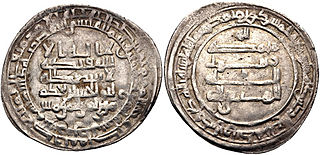 W
WAbū al-Husayn Bajkam al-Mākānī, referred to as Bajkam, Badjkam or Bachkam, was a Turkish military commander and official of the Abbasid Caliphate. A former ghulam of the Ziyarid dynasty, Bajkam entered Abbasid service following the assassination of the Ziyarid ruler Mardavij in 935. During his five-year tenure at the Caliphate's court at Baghdad, he was granted the title of amir al-umara, consolidating his dominance over the Caliphs ar-Radi and al-Muttaqi and giving him absolute power over their domains. Bajkam was challenged throughout his rule by various opponents, including his predecessor as amir al-umara, Muhammad ibn Ra'iq, the Basra-based Baridis, and the Buyid dynasty of Iran, but he succeeded in retaining control until his death. He was murdered by a party of Kurds during a hunting excursion in 941, shortly after the accession of al-Muttaqi as Caliph. Bajkam was known both for his firm rule and for his patronage of Baghdad intellectuals, who respected and in some cases befriended him. His death led to a void in central power, resulting in a brief period of instability and fighting in Baghdad.
 W
WAl-Husayn ibn al-Qasim was a senior official of the Abbasid Caliphate who served as vizier from September 931 until May 932.
 W
WMuḥammad Abū’l-Qāsim Ibn Ḥawqal, also known as Abū al-Qāsim b. ʻAlī Ibn Ḥawqal al-Naṣībī, born in Nisibis, Upper Mesopotamia; was a 10th-century Arab Muslim writer, geographer, and chronicler who travelled during the years 943 to 969 AD. His famous work, written in 977 AD, is called Ṣūrat al-’Arḍ. The date of his death, known from his writings, was after 368 AH/978 AD.
 W
WAl-Mas'udi was an Arab historian, geographer and traveler. He is sometimes referred to as the "Herodotus of the Arabs". A polymath and prolific author of over twenty works on theology, history, geography, natural science and philosophy, his celebrated magnum opus Murūj al-Dhahab wa-Ma'ādin al-Jawhar, combines universal history with scientific geography, social commentary and biography, and is published in English in a multi-volume series as The Meadows of Gold and Mines of Gems.
 W
WAhmad ibn Buya, after 945 better known by his laqab of Mu'izz al-Dawla, was the first of the Buyid emirs of Iraq, ruling from 945 until his death.
 W
WAbu Muhammad al-Hasan ibn Abu'l-Hayja 'Abdallah ibn Hamdan al-Taghlibi, more commonly known simply by his laqab of Nasir al-Dawla, was the second Hamdanid ruler of the Emirate of Mosul, encompassing most of the Jazira.
 W
WAbū Sahl Wayjan ibn Rustam al-Qūhī was a Persian mathematician, physicist and astronomer. He was from Kuh, an area in Tabaristan, Amol, and flourished in Baghdad in the 10th century. He is considered one of the greatest Muslim geometers, with many mathematical and astronomical writings ascribed to him.
 W
WʿAlī ibn ʾAbū l-Hayjāʾ ʿAbdallāh ibn Ḥamdān ibn al-Ḥārith al-Taghlibī, more commonly known simply by his laqab of Sayf al-Dawla, was the founder of the Emirate of Aleppo, encompassing most of northern Syria and parts of western Jazira, and the brother of al-Hasan ibn Abdallah ibn Hamdan.